Van Cortlandt Park is the fourth largest park in New York City, at 1,146 acres (according to the Van Cortlandt Park Conservancy), or 1,122 acres if you ask the Parks Department.
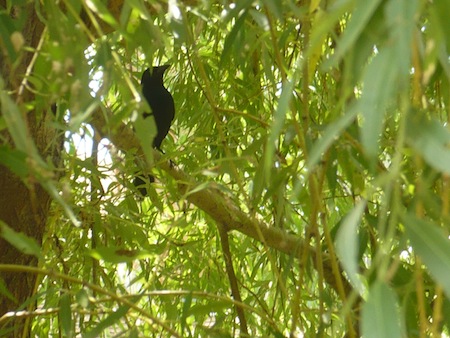
It's been a park since 1888, but its history, from a European point of view, goes much further back, to the early Dutch settlers and specifically Adriaen Van der Donck (1620-1655), who came to own all the surrounding land in the Bronx after arriving in America as the schout (sheriff and public prosecutor) for the semi-independent Dutch colony run by Kiliaen van Rensselaer.
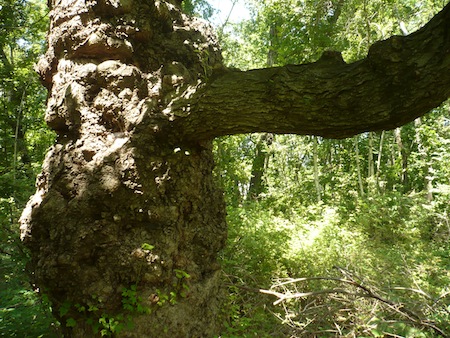
Van der Donck, who gave his name to the city of Yonkers, was one of the most fascinating characters of the early years of Dutch settlement of the Hudson Valley and New Amsterdam. (Read Russell Shorto's The Island at the Center of the World for an intensely interesting history of the period; Van der Donck figures prominently.) In 1694 Jacobus Van Cortlandt bought some of Van der Donck's land, the genesis of a great New York City name and dynasty.
I always like to get to the heart of things, when such an organ exists, and for our Independence Day excursion to Van Cortlandt Park we aimed almost unconsciously for just that point: the now-overgrown burial ground of the Van Cortlandt family.
I don't know why I end up in the giant parks on the big holidays. Cinco de Mayo happened to be the day we planned our Park Odyssey visit to Flushing Meadows Corona Park in Queens – which turned out to be the location of the city's main Cinco de Mayo celebration. July 4 of this year turned out to be the perfect day for a jaunt north, to the last stop on the #1 train and the southwestern entrance to Van Cortlandt Park.
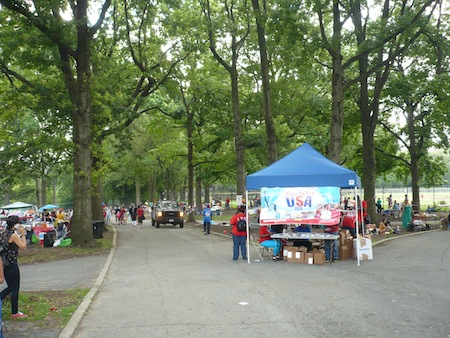
The park is so large it can seem overwhelming. We envisaged exploring just the southwestern corner and possibly making our way as far as a spot marked on the map with the mysterious name of Vault Hill. So, after bustling our way through a sea of barbecuers, we set off through the tall grass.

Quickly we came upon the southern end of Van Cortlandt Lake, an 18-acre body of water chock full of yellow perch, sunfish, brown bullhead catfish (catch those using hot dogs as bait! says the Department of Environmental Conservation website) and other fish. In the following photo, the building on the right is connected to one of the park's golf courses. Van Cortlandt Park is the site of the first public golf course in the country, which opened in 1895.
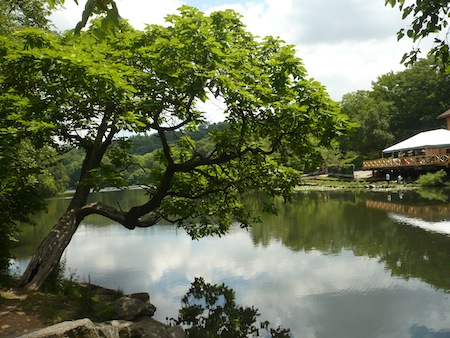
The park has several named trails. We headed north on the Putnam Trail which runs alongside the lake and then continues parallel to Tibbetts Brook (part of which was dammed back in the late 17th century to create the lake).
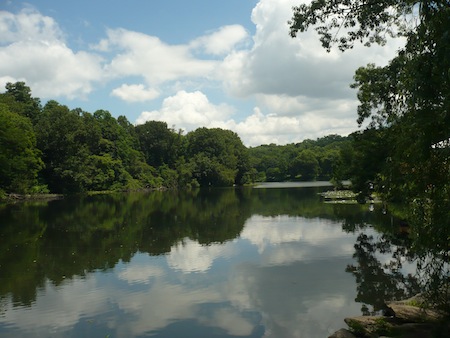
The trail passes some picturesque wetlands.
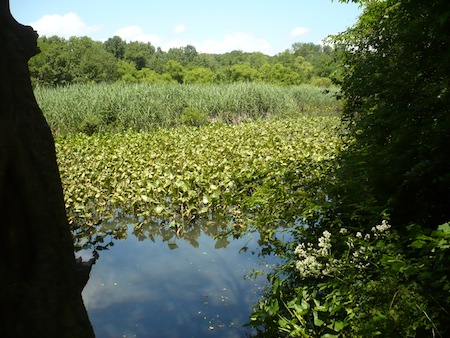
Long-abandoned rail lines run through the area too.

Looking for a side trail that was marked on the maps but nowhere to be found in the meat world, we passed under the Mosholu Parkway, then turned back and found a hole in the fence, which seemed to lead in the general direction we wanted. What it in fact led to was the Van Cortlandt Golf Course.
Only a few players were out on this very hot day, and they didn't pay us any mind as we scrambled south along the edge of the course, eventually escaping through another hole in another fence.
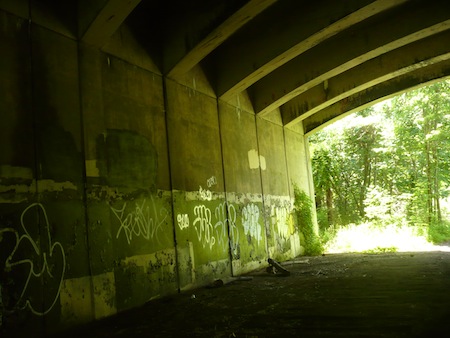
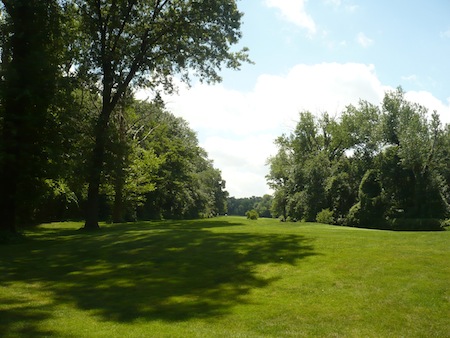
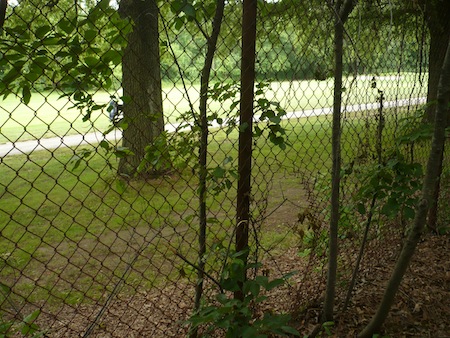
And bingo! Vault Hill, final resting place of generations of Van Cortlandts, of whom there are no more, which presumably is why no one's maintaining the place.


Turning from the burial ground we came upon raspberries about to ripen, 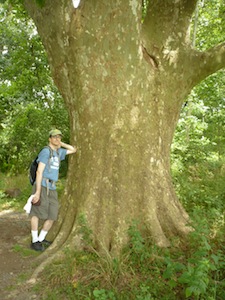
Much newer is the Van Cortlandt Park Conservancy, modeled I assume on the Central Park Conservancy, and co-existing with the Friends of Van Cortlandt Park. The latter, among other things, raises funds for trail restoration, and I can think of one trail that, per my July 4 experience, needs to be restored into existence – but perhaps there's an explanation for the Case of the Missing Trail. Maybe something to do with its pink color on the PDF map? Or its existence in a different location as per Google Maps GPS – a location that also, in real life, is sans trail? I await enlightenment from the sages of Van Cortlandt.
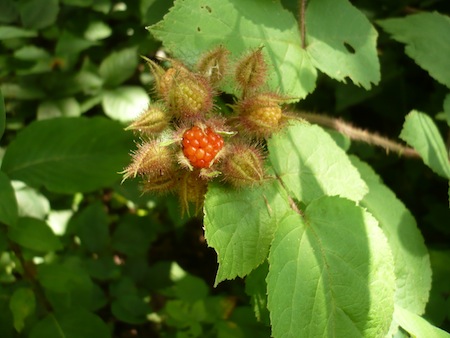
Meanwhile, a visit to the rest of this giant park will have to wait for another day, as will exploration of the Van Cortlandt House Museum which, not surprisingly, wasn't open on the July 4 holiday.
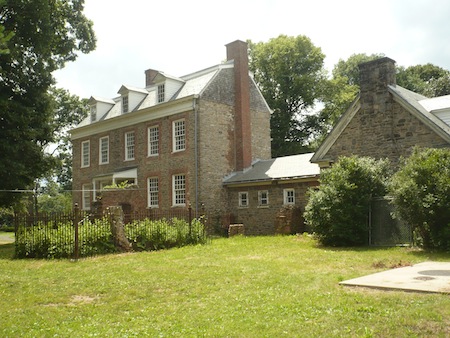
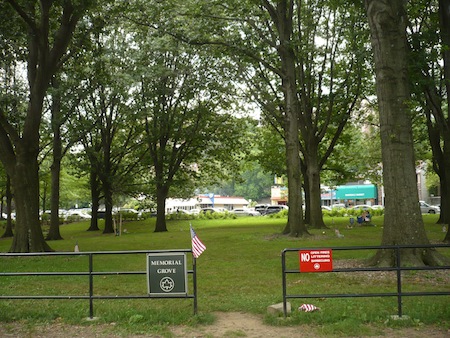
No comments:
Post a Comment